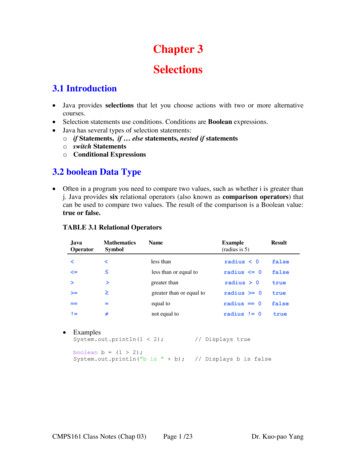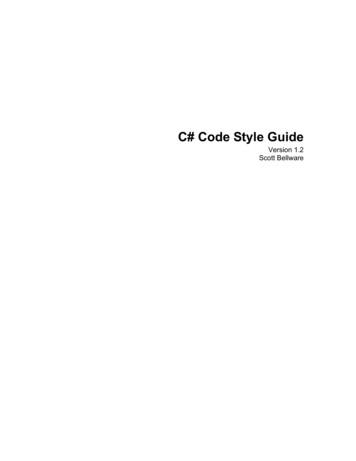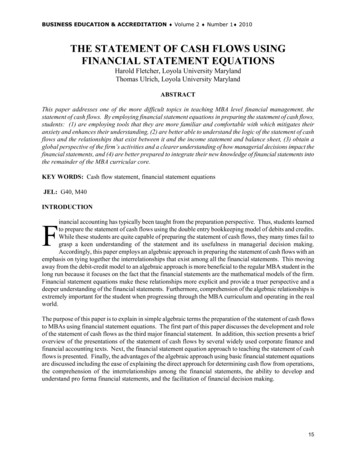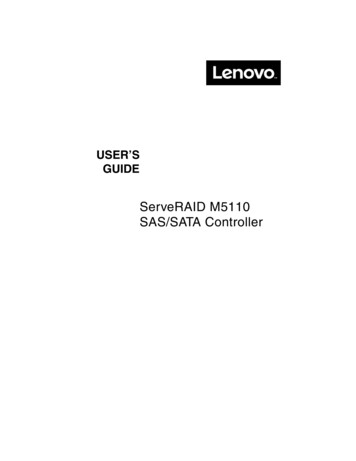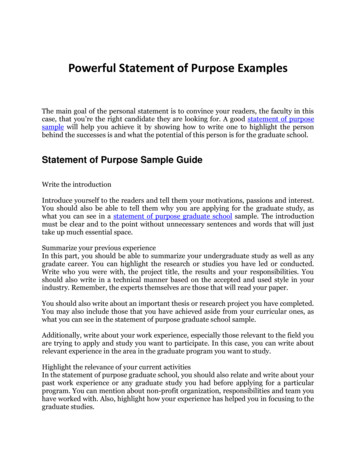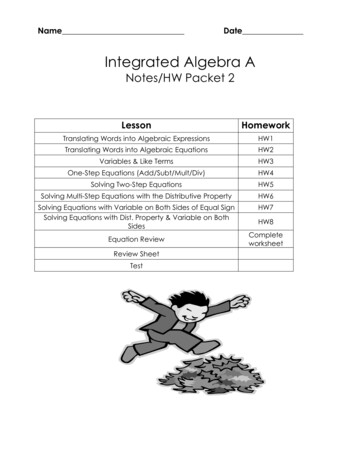
Transcription
Today’s lecture!!!Last lecture we started talking about control flow in MIPS (branches)Finish up control-flow (branches) in MIPS— if/then— loops— case/switchArray Indexing vs. Pointers— In particular pointer arithmetic— String representationSlides adapted from Josep Torrellas, Craig Zilles, and Howard Huang1Translating an if-then statement! We can use branch instructions to translate if-then statements into MIPSassembly code.v0 a0;if (v0 0)v0 -v0;v1 v0 v0;move v0 a0bge v0, 0, Labelsub v0, 0, v0Label: add v1, v0, v0! Sometimes it’s easier to invert the original condition.— In this case, we changed “continue if v0 0” to “skip if v0 0”.— This saves a few instructions in the resulting assembly code.2
Translating an if-then-else statements! If there is an else clause, it is the target of the conditional branch— And the then clause needs a jump over the else clause// increase the magnitude of v0 by oneif (v0 0)bge v0,v0 --;sub v0,jLelsev0 ;E: add v0,v1 v0;L: move v1, 0, E v0, 1 v0, 1 v0— Drawing the control-flow graph can help you out.3Control-flow graphs! It can be useful to draw control-flow graphs when writing loops andconditionals in assembly:// Find the absolute value of *a0v0 *a0;if (v0 0)v0 -v0;v1 v0 v0;// Sum the elements of a0v0 0;t0 0;while (t0 5) {v0 v0 a0[t0];t0 ;}4
What does this code do?label:subbne a0, a0, 1 a0, zero, label5LoopsLoop:jLoop!!# goto Loopfor (i 0; i 4; i ) {// stuff}!Loop:add t0,// stuffaddi t0,slti t1,bne t1, zero, zero# i is initialized to 0, t0 0 t0, 1 t0, 4 zero, Loop# i # t1 1 if i 4# go to Loop if i 46
Case/Switch Statement! Many high-level languages support multi-way branches, e.g.switch (two bits) {case 0:break;case 1:/* fall through */case 2:count ;break;case 3:count 2; break;}! We could just translate the code to if, thens, and elses:if ((two bits 1) (two bits 2)) {count ;} else if (two bits 3) {count 2;}! This isn’t very efficient if there are many, many cases.7Case/Switch Statementswitch (two bits) {case 0:break;case 1:/* fall through */case 2:count ;break;case 3:count 2; break;}!Alternatively, we can:1. Create an array of jump targets2. Load the entry indexed by the variable two bits3. Jump to that address using the jump register, or jr, instruction8
Representing strings! A C-style string is represented by an array of bytes.— Elements are one-byte ASCII codes for each character.— A 0 value marks the end of the array.32333435363738394041424344454647space!”# %&’()* ,./484950515253545556575859606162630123456789:; 0818283848586878889909192939495PQRSTUVWXYZ[\] 96979899100101102103104105106107108109110111 3124125126127pqrstuvwxyz{ } del9Null-terminated Strings! For example, “Harry Potter” can be stored as a 13-byte array.7297Ha114 114 121rry3280P111 116 116 101 114otter0\0! Since strings can vary in length, we put a 0, or null, at the end of the string.— This is called a null-terminated string! Computing string length— We’ll look at two ways.10
What does this C code do?int foo(char *s) {int L 0;while (*s ) { L;}return L;}11Array Indexing Implementation of strlenint strlen(char *string) {int len 0;while (string[len] ! 0) {len ;}return len;}12
Pointers & Pointer Arithmetic!Many programmers have a vague understanding of pointers— Looking at assembly code is useful for their comprehension.int strlen(char *string) {int len 0;while (string[len] ! 0) {len ;}return len;}int strlen(char *string) {int len 0;while (*string ! 0) {string ;len ;}return len;}13What is a Pointer?!!!!!A pointer is an address.Two pointers that point to the same thing hold the same addressDereferencing a pointer means loading from the pointer’s addressA pointer has a type; the type tells us what kind of load to do— Use load byte (lb) for char *— Use load half (lh) for short *— Use load word (lw) for int *— Use load single precision floating point (l.s) for float *Pointer arithmetic is often used with pointers to arrays— Incrementing a pointer (i.e., ) makes it point to the next element— The amount added to the point depends on the type of pointer pointer pointer sizeof(pointer’s type)!1 for char *, 4 for int *, 4 for float *, 8 for double *14
What is really going on here int strlen(char *string) {int len 0;while (*string ! 0) {string ;len ;}return len;}15Pointers Summary! Pointers are just addresses!!— “Pointees” are locations in memory! Pointer arithmetic updates the address held by the pointer— “string ” points to the next element in an array— Pointers are typed so address is incremented by sizeof(pointee)16
3 Translating an if-then-else statements! If there is an else clause, it is the target of the conditional branch Ñ And the then clause needs a jump over the else clause
